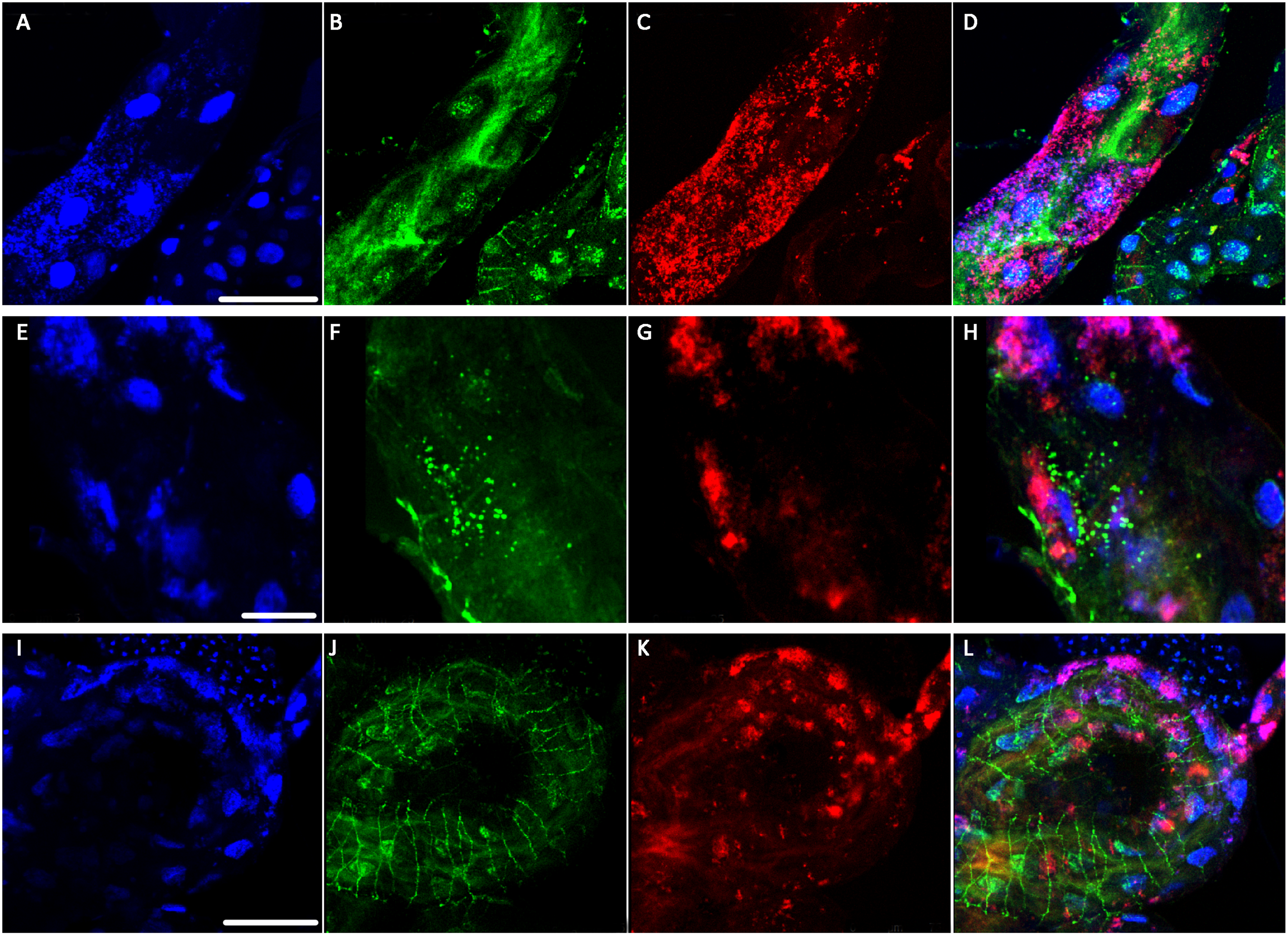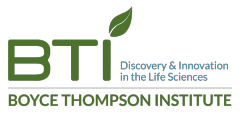USDA NIFA CitrusGreening Research Projects and Highlights
We feature USDA NIFA funded Huanglongbing (HLB) projects and important research developments in this section. Please contact us to submit your USDA NIFA projects and research.
Accelerating implementation of HLB-tolerant hybrids as new commercial cultivars for fresh and processed citrus
Article written by Jinhe Bai, Anne Plotto, Ed Stover, Matt Mattia, Fred Gmitter and Mikeal Roose
Article edited by Peggy Lemaux, Lukasz Stelinski
What is the research?
Breeding and selecting HLB-tolerant varieties will provide the most sustainable solution to this devastating disease. This project includes validation of HLB-tolerance in the field, identification of genetic markers associated with tolerance to expedite varietal screening, and characterization of the fruit and juice quality of the tolerant selections. Due to the urgent need of maintaining the Florida juice industry, a major focus has been to select fruit with sweet-orange-like traits for juice. Many thousands of trees have been evaluated in the field for these traits. Standards and trees showing some HLB-tolerance, from over fifty hybrids and selected commercial cultivars, were harvested over a course of five years for juice analysis. Fruit was evaluated for juice chemistry, as well as sensory traits using a trained tasting panel.
What are major successes to date?
Tasting panel tests confirmed the superior orange-like flavor of U.S. SunDragon and Sugar Belle®, and verified their suitability for blending with sweet-orange juice. Some named cultivars and selections from breeding programs also had good field performance and good quality but most were more like mandarin oranges, sweet and tasty, but flavor was not similar to sweet orange.
HLB-tolerance and good fruit traits have been shown in conventional citrus and also in hybrids derived from more distant citrus relatives. This greatly expands the diversity that can contribute to commercial citrus and strengthens the likelihood of durable HLB-tolerance.
Extensive data have been collected on fruit quality and HLB-tolerance, and tree genetics and are being analyzed to provide genetic markers for the traits that will permit rapid screening in breeding populations. We anticipate that this work will provide HLB-tolerant selections for use in juice or as fresh fruit and will accelerate identification of the best material among 50,000 hybrids recently produced in citrus breeding programs. This work will also help identify volatiles and other chemicals that contribute most to orange or mandarin flavor.
What are the challenges and opportunities?
The team has completed four years of a five-year project and extensive data have been collected. However, identification of screening markers for HLB tolerance and juice quality is hampered by variability in effects caused by HLB between plants due to variable time of infection between trees for this slow-developing disease and likely variable root adaptation of trees grown from seed rather than produced by grafting. While genetic analysis is fast and relatively affordable, collection of tree and fruit data on thousands of trees remains expensive and time-consuming. Identification of accurate and high through-put assessments are underway and will be critical to ultimate success.
Funding source
USDA-National Institute of Food and Agriculture (NIFA) - Citrus Disease Research and Extension Program # Grant 2018-70016-27453
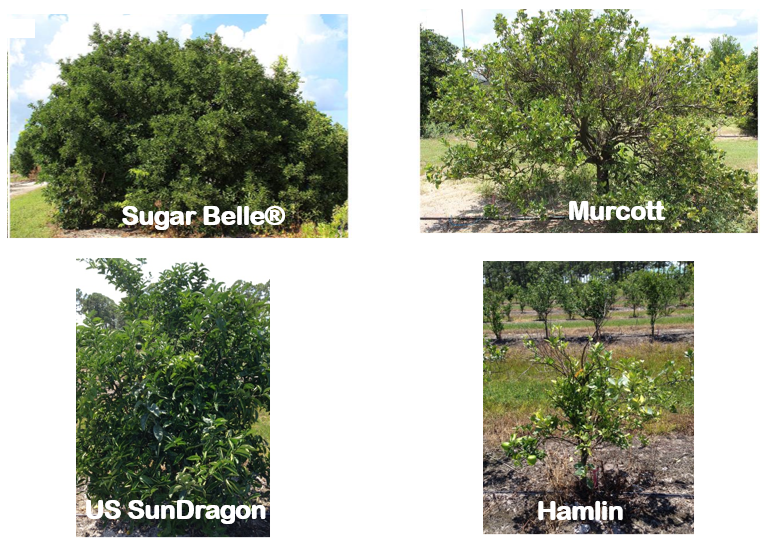
Developing novel biological delivery methods for therapeutic agents and other biomolecules to enhance production of citrus
Article written by Robert Shatters, Ed Stover, Kimberly Wood
Article edited by Michelle Heck, Mark Trimmer, Peggy Lemaux, Lukasz Stelinski
What is the research?
Scientific advancements have uncovered many ways to enhance crop-plant performance using new therapeutic approaches, but implementation in commercial agriculture has been slow. In this project, started in 2020 but building on several prior projects, delivery methods are being developed for cost-effective application in commercial agriculture. Several technologies are used, but a major focus is optimization of molecules in plant cells (biomolecules), known as SymbiontsTM, which are created through genetic manipulation. Symbionts, grafted to crop plants (surgically attached to connect to plant tissues, see Figure) for biomolecule delivery throughout the plants, produce therapeutic molecules in a manner which optimizes their commercial benefits. Molecular biology methods are used to maximize biomolecule production and distribution to critical plant tissues. Agricultural engineers are developing methods for efficient grafting of Symbionts to citrus or other target plants in the nursery and field. In addition to direct production in plants, specially designed Symbionts, grown in liquid culture, produce biomolecules at high rates such that they can be cheaply extracted and used for direct plant application, like current agrochemical sprays. This NIFA-funded project has many complementary components such as: phloem targeted delivery devices; new HLB-suppressing therapies (including nanobodies); testing potential therapies from this and other projects in a bench to field pipeline; and HLB-targeted crop genetic engineering.
What are some of the major successes to date?
Symbionts have been shown to alleviate citrus greening symptoms in small citrus trees in the greenhouse, and discussions with APHIS are underway to conduct field evaluations. Molecular biology methods have been used to refine the genetic manipulations in Symbionts to enhance biomolecule production. Symbionts grown in culture have produced high levels of biomolecule production reaching multi-gram quantities. These biomolecules are plant-based and can be delivered to citrus trees using trunk infusion.
The team has also engineered plants to express molecules that are toxic to Asian citrus psyllids with induced mortalities of up to 83% (vs. 5% in normal control plants) when fed on by adult psyllids. Engineered plants, designed to produce molecules that kill the bacterium that causes citrus greening disease, are currently under evaluation.
What are the challenges and opportunities?
The team has completed 1.5 years of a five-year project. Tremendous progress has occurred on most fronts as the team works toward commercialization of the Symbionts, direct plant infusion of Symbiont-produced biomolecules, and transgenic strategies. Candidate therapies must demonstrate consistent performance under field conditions. In addition, an extensive portfolio of information on environmental, fruit quality, and other effects must also be assembled and assessed by regulatory agencies before therapeutic materials and Symbionts will be available for use by growers.
Funding source
USDA-National Institute of Food and Agriculture (NIFA) - Citrus Disease Research and Extension Program # Grant 2020-70029-33176
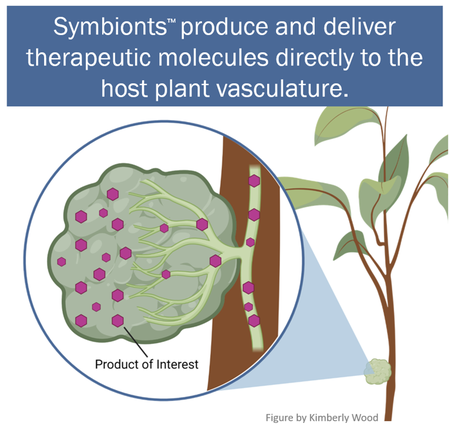
Development of antimicrobial peptides from citrus to kill the CLas bacterium causing HLB
Article written by: Ed Stover, Goutam Gupta
Article edited by: Lukasz Stelinski, Peggy G. Lemaux
What is the technique?
Antimicrobial peptides (AMPs) are small proteins produced by plants and animals as a first line of protection against pathogens by disrupting the pathogen’s cells. Our overall goal is to suppress CLas and maintain health in HLB-affected citrus. All organisms produce many peptides (small proteins), which serve many functions, including some unrelated to disease resistance. In this research, we are focusing on a specific subset of AMPs, derived from citrus genes, that will be used to kill CLas that causes HLB disease.
How are these AMPs developed and tested?
These citrus-derived AMPs have shown excellent activity against CLas in the lab and greenhouse. The goal of this NIFA project is to evaluate their efficacy as killing agents against CLas and therapeutics for existing infected trees to sustain commercial citrus production. In addition, we are developing trees that themselves express these AMPs to provide a form of HLB resistance.
How are these AMPs developed and tested?
These citrus-derived AMPs have shown excellent activity against CLas in the lab and greenhouse. The goal of this NIFA project is to evaluate their efficacy as killing agents against CLas and therapeutics for existing infected trees to sustain commercial citrus production. In addition, we are developing trees that themselves express these AMPs to provide a form of HLB resistance.
The latest versions of the anti-HLB AMPs consist of two different types of citrus peptides linked together. After scouring the citrus gene sequence data, candidate peptides are selected which are first tested for interactions with CLas membranes using computer simulation. The best AMPs from these studies are then tested in lab cultures for their ability to kill bacteria related to CLas. The promising candidate AMPs are then tested for toxicity to plants and animal cells. AMPs that pass these tests are then tested in HLB-affected citrus trees in the greenhouse and then in the field, to determine if they destroy CLas and enhance tree health. This process is outlined in the figure below.
Who is working on this project?
Goutam Gupta (The New Mexico Consortium), Supratim Basu (The New Mexico Consortium), Pankaj Travedi (Colorado State University), Joseph Krystel (USDA Agricultural Research Laboratory in Ft. Pierce, FL), Madhu Kunta (Texas A&M University at Kingsville), Randy Niedz (USDA Ft. Pierce), Joseph Patt (USDA Ft. Pierce), Surya Saha (Boyce Thompson Institute), Lukas Mueller (Boyce Thompson Institute), and Michael Braverman (Rutgers University).
What are our greatest challenges?
The team has completed one year of a three-year project. The latest generation of peptides is currently under evaluation. An emerging challenge is that application methods that demonstrate effective kill of CLas in greenhouse trees are not readily transferable to field-grown trees. An extensive portfolio of information on environmental, fruit quality, and other effects must also be assembled and assessed by EPA and FDA before these peptides will be available for use by growers.
Funding source
USDA- National Institute of Food and Agriculture (NIFA)- Citrus Disease Research and Extension Program
Article edited by: Lukasz Stelinski, Peggy G. Lemaux
What is the technique?
Antimicrobial peptides (AMPs) are small proteins produced by plants and animals as a first line of protection against pathogens by disrupting the pathogen’s cells. Our overall goal is to suppress CLas and maintain health in HLB-affected citrus. All organisms produce many peptides (small proteins), which serve many functions, including some unrelated to disease resistance. In this research, we are focusing on a specific subset of AMPs, derived from citrus genes, that will be used to kill CLas that causes HLB disease.
How are these AMPs developed and tested?
These citrus-derived AMPs have shown excellent activity against CLas in the lab and greenhouse. The goal of this NIFA project is to evaluate their efficacy as killing agents against CLas and therapeutics for existing infected trees to sustain commercial citrus production. In addition, we are developing trees that themselves express these AMPs to provide a form of HLB resistance.
How are these AMPs developed and tested?
These citrus-derived AMPs have shown excellent activity against CLas in the lab and greenhouse. The goal of this NIFA project is to evaluate their efficacy as killing agents against CLas and therapeutics for existing infected trees to sustain commercial citrus production. In addition, we are developing trees that themselves express these AMPs to provide a form of HLB resistance.
The latest versions of the anti-HLB AMPs consist of two different types of citrus peptides linked together. After scouring the citrus gene sequence data, candidate peptides are selected which are first tested for interactions with CLas membranes using computer simulation. The best AMPs from these studies are then tested in lab cultures for their ability to kill bacteria related to CLas. The promising candidate AMPs are then tested for toxicity to plants and animal cells. AMPs that pass these tests are then tested in HLB-affected citrus trees in the greenhouse and then in the field, to determine if they destroy CLas and enhance tree health. This process is outlined in the figure below.
Who is working on this project?
Goutam Gupta (The New Mexico Consortium), Supratim Basu (The New Mexico Consortium), Pankaj Travedi (Colorado State University), Joseph Krystel (USDA Agricultural Research Laboratory in Ft. Pierce, FL), Madhu Kunta (Texas A&M University at Kingsville), Randy Niedz (USDA Ft. Pierce), Joseph Patt (USDA Ft. Pierce), Surya Saha (Boyce Thompson Institute), Lukas Mueller (Boyce Thompson Institute), and Michael Braverman (Rutgers University).
What are our greatest challenges?
The team has completed one year of a three-year project. The latest generation of peptides is currently under evaluation. An emerging challenge is that application methods that demonstrate effective kill of CLas in greenhouse trees are not readily transferable to field-grown trees. An extensive portfolio of information on environmental, fruit quality, and other effects must also be assembled and assessed by EPA and FDA before these peptides will be available for use by growers.
Funding source
USDA- National Institute of Food and Agriculture (NIFA)- Citrus Disease Research and Extension Program

Hunter et al. 2019
New strategies, using Modified Pest Management, MPM, approaches continue to provide highly specific pest control strategies that are safe. The method was highly specific to the psyllid with no detrimental impact on beneficial insects, predators or parasitoids of psyllids. Similar management will someday reduce dependence upon broad spectrum insecticides. The breakthrough permits treatment of adults to disrupt an essential insect protein. The method, called BAPC-assisted-Delivery, improved treatment of adult Asian Citrus Psyllids, Diaphorina citri, whose offspring then showed the same greatly reduced fecundity and lifespan. The method also permits researchers to screen other potential targets for new pest control products, and to understand a genes specific function in psyllid biology, or in the bacterial pathogen acquisition and transmission to citrus trees. Using this method a specific gene was identified that may provide one means to greatly reduce Asian citrus psyllid populations, and thereby reduce the spread of Huanglongbing.

Figure 1. The G1, TXT-KO adult psyllids had significantly shorter adult lifespans post eclosion living an average 8.5 days, compared to controls injected with buffer, which averaged 16 d post eclosion. Adult female insects producing eggs when injected resulted in TXT-KO G1 mutants. The few adults G2, that eclosed from their eggs also showed the traits of longer development time, increased mortality, and shortened adult lifespan as adults, with greatly reduced fecundity, as compared to wild type psyllids.
Hunter et al. developed BAPC-assisted-CRISPR-Delivery System, for improved heritable gene editing when injecting adults or nymphs of insects [Hemiptera]. Addition of Branched Amphiphilic Peptide Capsules, BAPCtofectTM (PhoreusTM Biotechnology, Inc.) improved delivery of CRISPR components for heritable gene editing, and also plasmids, or dsRNA for expression and gene targeting in insect nymphs and Asian Citrus Psyllid adults. The method bypasses traditional microinjection of eggs. This reports the first heritable gene knock out (KO), using BAPC-assisted-CRISPR-Cas9, which resulted in G2 mutants post injection of adult psyllid females, G0. The KO target was the thioredoxin gene, resulting in nucleotide deletions at the sgRNA at each end of the 550 nt region in the gDNA. In psyllids the thioredoxin gene, TXT, knock outs produced changes in physiology. Strategies to alter the psyllid vector, into a non-vector of the bacterium, CLas, are now possible. One function of TXT is to promote development. The TXT-KO adult lifespan was reduced by ~50%, development was slower and fecundity severely limited to just a few eggs in the KO adults lifetime. Reduced fecundity and slow development traits is a strategy that would reduce psyllid populations by increasing exposure time to parasitism and predation on nymphal stages. Classical CRISPR/Cas9 injections of nymphs, pupae, and adults produced white eye phenotypes, by vermillion gene knock out (Hunter in press). The BAPCTM-assisted delivery system advances gene editing across hemipterans and insects by permitting the use of nymphs and adults. To read about these findings in more detail, please visit FASEB journal.
Mann et al. 2018

Diaphorina citri Nymphs are Resistant to Morphological Changes Induced by "Candidatus Liberibacter asiaticus" in Midgut Epithelial Cells
Translation? The gut cells of the Asian citrus psyllid nymphs do not respond the same way to infection by the Huanglongbing bacterial pathogen as adult guts. This was unexpected.
Translation? The gut cells of the Asian citrus psyllid nymphs do not respond the same way to infection by the Huanglongbing bacterial pathogen as adult guts. This was unexpected.
Marina Mann and Somayeh Fattah-Hosseini, two scientists in Michelle Heck's vector biology lab (located in Ithaca, NY at the Boyce Thompson Institute for Plant Research) lead research that found a surprising visual difference between how nymph and adult guts of the Asian citrus psyllid (Diaphorina citri) respond to infection by "Ca. Liberibacter asiaticus," the causative bacterial agent of Huanglongbing (HLB), or Citrus greening disease.
Mann et. al. used the confocal microscope to image guts that were stained with a fluorescent dye to show the location of the nucleus in each gut cell. They looked at four treatments: healthy nymphs and adults, and "Ca. Liberibacter asiaticus"-exposed nymphs and adults. By comparing images of individual guts in each treatment they could define four "fragmentation classes" of nuclear disturbance (classes 0-3), ranging from the healthy, round nuclear shape, to completely fragmented and barely recognizable nuclear shapes. (Figure 3 of paper). Then, they counted every single nucleus in each of their gut images and scored it 0-3 to get the average proportion of nuclei in each fragmentation class, for each of their treatments.
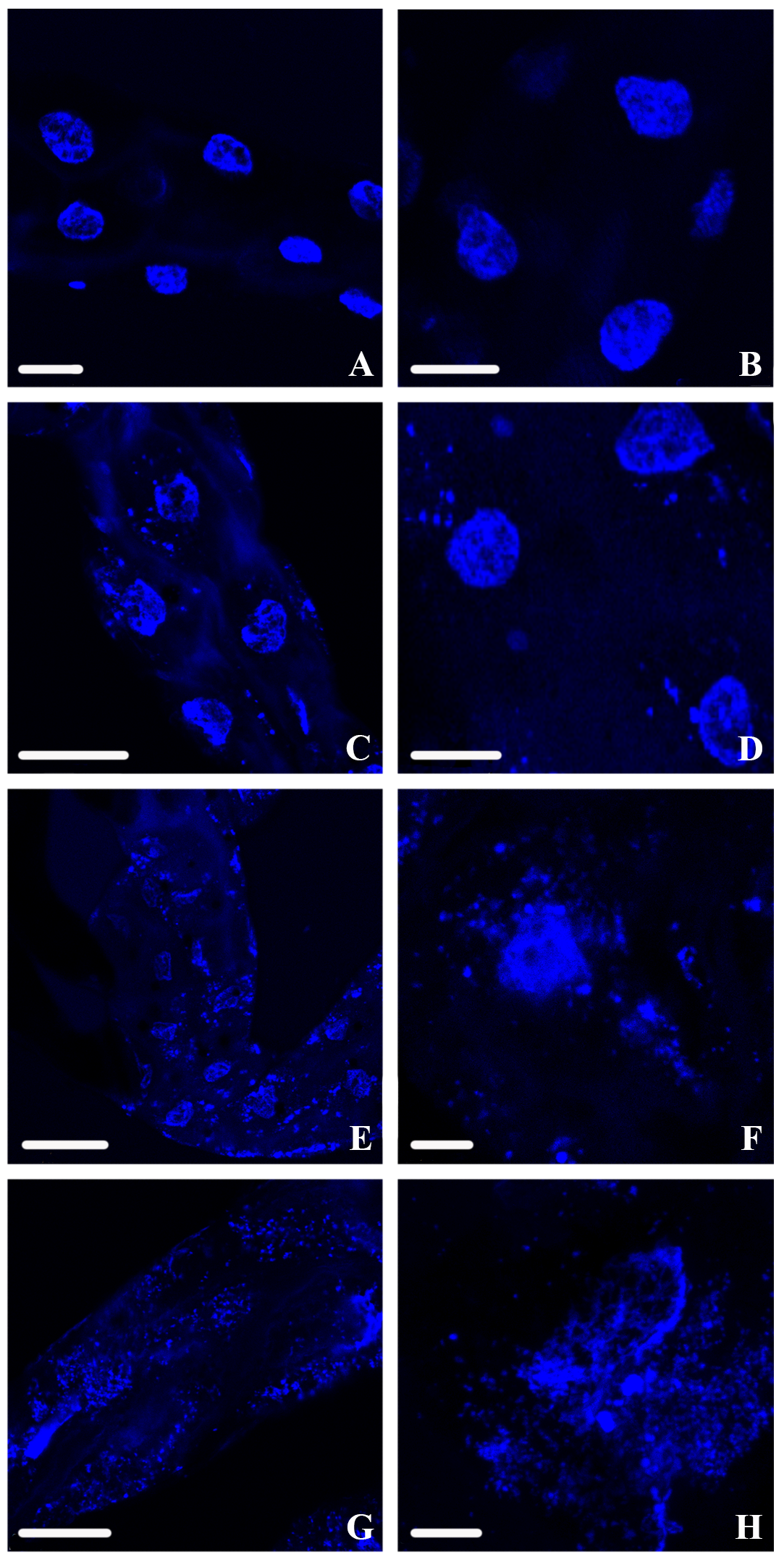

In support of results published earlier by Kruse et al (2017), adult psyllid guts, when exposed to the HLB bacteria, were shown to have a marked increase in numbers of gut nuclei that were non-normal (classes 1-3, excluding 0) when compared to adult guts from healthy psyllids. This elevated visual gut disturbance was expected. (Figure 5 of paper).
However, when they looked at guts of both healthy and "Ca. Liberibacter asiaticus"-exposed nymphs, the guts looked the same. There was no visible impact of infection on gut nuclear shape of nymphs, a striking difference to what was seen with adults. (Figure 5 of paper).
The literature solidly shows that Asian citrus psyllids acquire the HLB bacteria much better as nymphs than as adults. This result, that nymphs do not have a visible response to infection, suggests that "Ca. Liberibacter asiaticus" has found a "backdoor" to evading the psyllid immune response. Identifying this door may be a viable means of controlling the psyllid's ability to vector the bacterial disease.
To put these results into more perspective, Mann et. al. furthered their analysis by imaging the psyllid endosymbiont Wolbachia, as well as the HLB pathogen itself "Ca. Liberibacter asiaticus," in the guts of adults and nymphs (as opposed to imaging just the gut nuclei). To read more on these specific results and the author's discussion, please see the full article: Mann et al. 2018.
Kruse et al. 2017
The Asian citrus psyllid is the vector for the bacterium associated with citrus greening disease, Candidatus Liberibacter asiaticus (CLas). CLas is spread by psyllids through a process called circulative transmission. This means that as the insects feed on plant sap, CLas moves into the insect gut and crosses it to exit into the hemolymph (insect blood). It circulates in the blood and finally reaches the salivary glands to be spit back into the next host tree. Kruse and her colleagues were interested in how CLas interacts with the gut to cross into the blood and be transmitted, and if the presence of CLas causes changes in the cells of the gut.
To find out, researchers at the Boyce Thompson Institute and Cornell University began with hundreds of dissected guts from psyllids feeding on either healthy or CLas-infected citrus plants. They analyzed their transcriptome (the genes being expressed in these tissues) and proteome (the proteins present in the tissues). This gives a snapshot of the activity in gut cells when CLas is present.

Kruse et. al. found that when CLas is in the insect gut, gut cells cannot make as much cellular energy. This became clear when they saw changes in the cycle that mitochondria use to make energy-it's called the citric acid cycle (Figure 1). Almost every protein in the cycle was effected by CLas! The gut cells also seem to react to CLas as a threat, rather than just a hitchhiker traveling from tree-to-tree. The cells mount an immune response to CLas. The cells even produce some defensive proteins that contribute to insecticide resistance.
The researchers also used a confocal microscope to look at specific bacteria inside the psyllid guts. They used probes which tag bacteria with a colored fluorescent molecule. This way, they could tell different bacteria apart and see exactly where they are. They used a green probe for CLas (Figure 2B), and a red probe for a symbiotic bacteria called Wolbachia that is always in the psyllid gut (Figure 2C). The cell's nuclei were labeled in blue (Figure 2A). They found that CLas enters psyllid gut cells. They also saw that Wolbachia and CLas can be in the very same gut cell, but they never seem to overlap (Figure 2D). This suggests that Wolbachia and CLas are either competing or cooperating within the psyllid. This begs the question-could Wolbachia be a potential tool in the fight against CLas, or are Wolbachia and CLas partners in crime? To read about these findings in more detail, find the full article at Plos One.
